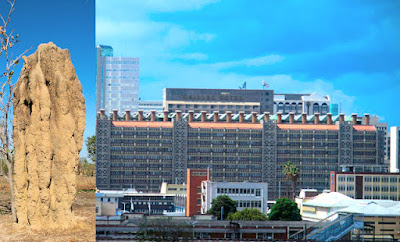10 Effective Strategies for Enhancing the Environmental Friendliness of Construction Projects
As our world becomes more conscious of the environmental challenges we face, the construction industry is embracing sustainable practices to minimize its ecological footprint. By adopting environmentally friendly measures, construction projects can significantly contribute to a greener and more sustainable future. In this article, we will explore ten effective strategies to make construction projects more environmentally friendly.

Conclusion: The construction industry plays a pivotal role in shaping a more sustainable future. By implementing these ten strategies, construction projects can significantly reduce their environmental impact, contribute to cleaner communities, and inspire positive change within the industry. As we continue to innovate and prioritize eco-friendly practices, we move closer to a world where construction and sustainability go hand in hand.
- Embrace Sustainable Materials: One of the fundamental ways to enhance a construction project's eco-friendliness is through the use of sustainable materials. Opt for locally sourced materials to reduce carbon emissions associated with transportation and choose eco-friendly options that have minimal negative impacts on the environment.
- Incorporate Energy-Efficient Designs: A construction project can greatly reduce its energy consumption by implementing energy-efficient designs. Prioritize proper insulation, maximize natural lighting, and integrate energy-efficient appliances to lower energy demands and minimize long-term operational costs.
- Harness Renewable Energy Sources: Integrating renewable energy sources like solar panels and wind turbines can transform construction projects into sustainable power generators. By harnessing clean energy, these projects contribute to reducing greenhouse gas emissions and reliance on fossil fuels.

- Minimize Construction Waste: Construction sites often generate significant amounts of waste. To combat this, prioritize waste reduction by recycling materials and employing responsible waste management practices. Repurpose salvaged materials wherever possible to further minimize waste.
- Implement Water Conservation Techniques: Construction projects can make a significant impact on water conservation. Install water-efficient fixtures, utilize rainwater harvesting systems, and employ smart irrigation techniques to reduce water consumption during and after construction.
- Integrate Green Landscaping: Incorporating green spaces and native plants into construction projects offers multiple benefits. These additions enhance air quality, mitigate urban heat island effects, and provide habitats for local wildlife.
- Choose Low-Impact Construction Methods: Opt for construction methods that minimize disruption to the environment. Modular construction, for example, reduces on-site waste and disturbance, making it a more sustainable alternative.
- Strive for LEED Certification: Leadership in Energy and Environmental Design (LEED) certification sets a high standard for environmentally responsible construction. Aim to achieve LEED certification for your project, demonstrating its commitment to sustainability.
- Conduct Comprehensive Environmental Impact Assessments: Thoroughly assess the potential environmental impacts of your project before beginning construction. This enables the identification of potential issues and the development of effective mitigation strategies.
- Foster Community Engagement: Involve local communities in the planning and development phases of the project. By considering their input and addressing concerns, you can create a project that aligns with community values and integrates sustainable solutions.
Conclusion: The construction industry plays a pivotal role in shaping a more sustainable future. By implementing these ten strategies, construction projects can significantly reduce their environmental impact, contribute to cleaner communities, and inspire positive change within the industry. As we continue to innovate and prioritize eco-friendly practices, we move closer to a world where construction and sustainability go hand in hand.


Comments